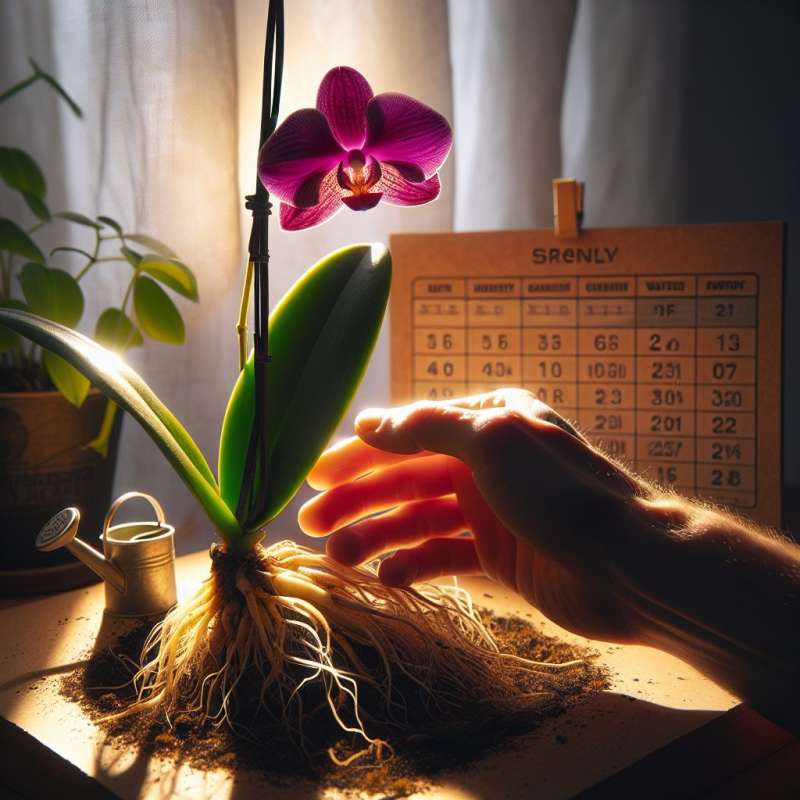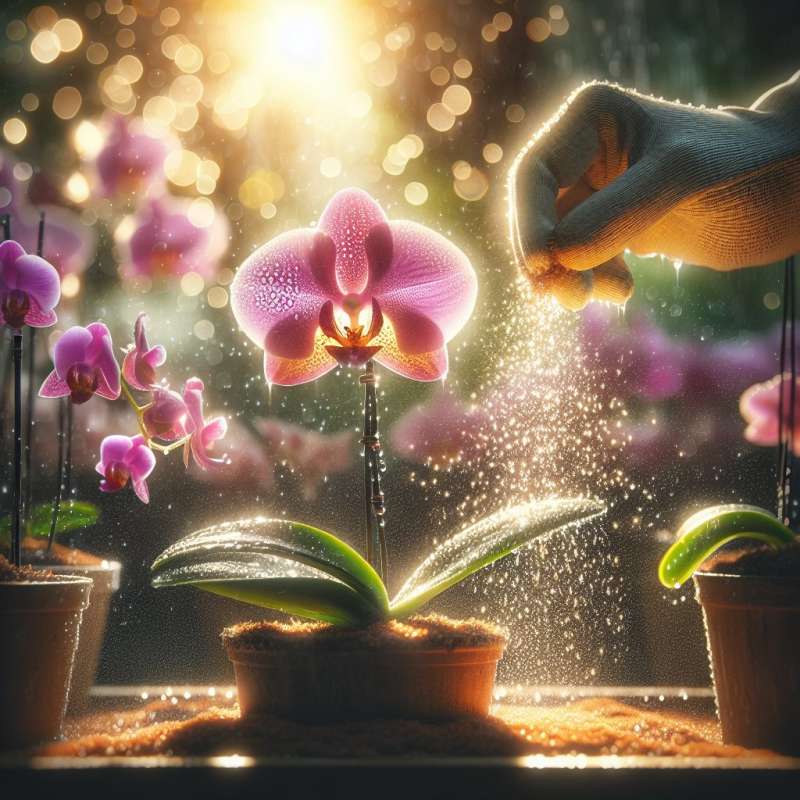
Understanding Orchid Types
Not all orchids are created equal. Differing vastly in habitat, epiphytic orchids grow on trees, while terrestrial ones root in soil. Each type demands specific care, mimicking its natural environment to thrive indoors.
Lighting: Orchids' Energy Source
Orchids flourish in bright, indirect light. Direct sunlight can scorch leaves, but too little light hampers blooming. Phalaenopsis thrive in east-facing windows, while Cattleyas prefer south-facing exposures with some shade.
Watering: Orchids' Lifeline
Overwatering is a common orchid pitfall. Roots need to dry out between watering sessions. Typically, watering once a week suffices, but this can vary. Observe your orchid; wrinkled leaves often indicate dehydration.
Temperature and Humidity
Orchids generally prefer temperatures between 60-80°F (15-27°C). Most orchids demand high humidity, between 40-70%. To increase humidity, place a water tray nearby, use a humidifier, or group plants together.
Fertilizing for Growth
Fertilize orchids regularly for vigorous growth. Use a balanced, water-soluble fertilizer at half-strength every other week. During active growth, switch to a high-nitrogen formula. When dormant, reduce fertilizing frequency.
Potting: Orchids' Foundation
Repotting every 2-3 years is essential for orchid health. Use a potting mix specific for orchids, providing ample drainage and aeration. Transparent pots can benefit photosynthesis in the roots and help monitor moisture.
Pest and Disease Vigilance
Orchids can be prone to pests like spider mites and diseases such as root rot. Regular inspection and prompt treatment with appropriate remedies can prevent minor issues from becoming major problems.
Where do epiphytic orchids naturally grow?
In desert environments
On trees
Underwater
Company